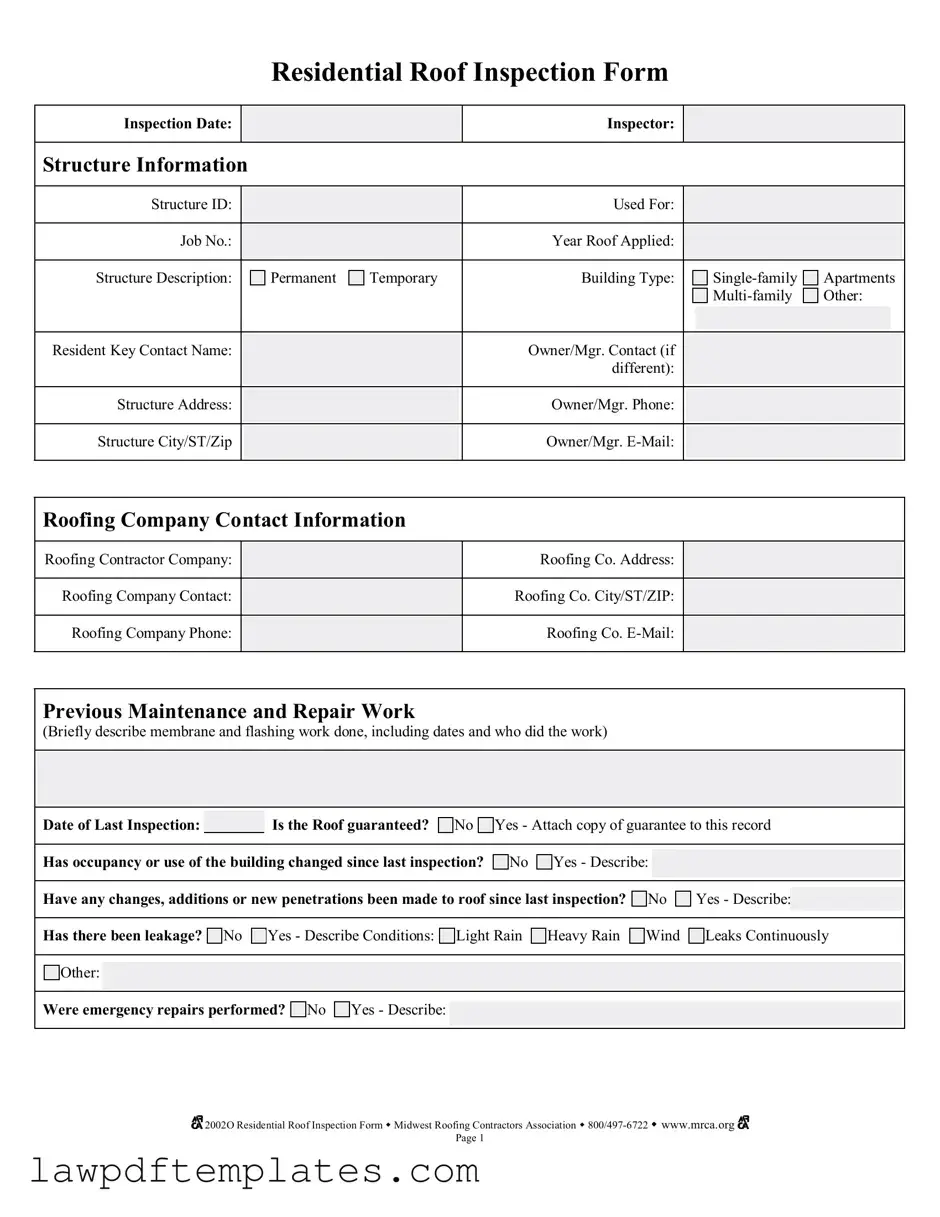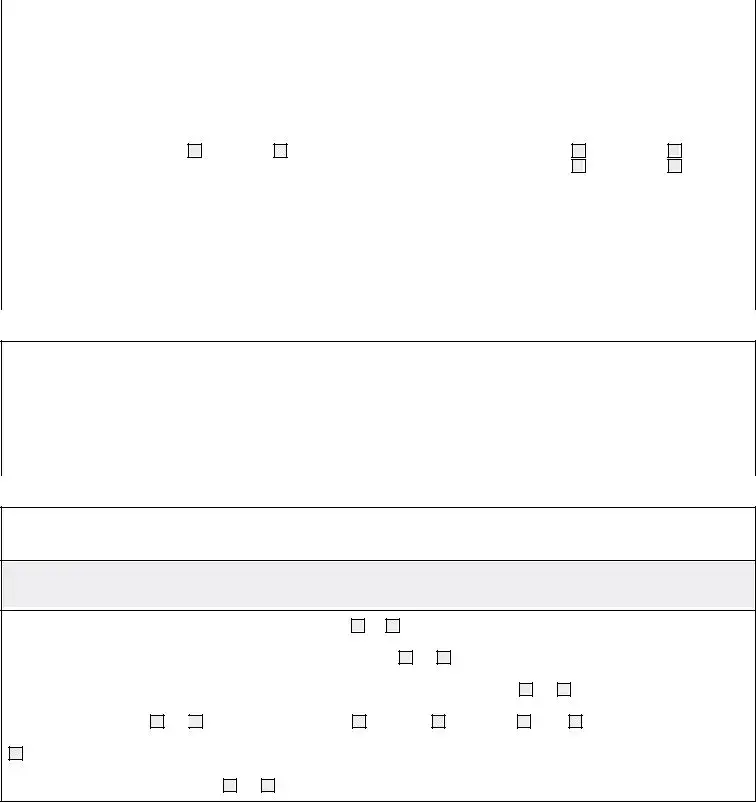Filling out a Roof Inspection form accurately is crucial for ensuring that all necessary information is captured. One common mistake people make is failing to include the inspection date. This detail is essential for tracking the history of inspections and maintenance. Without it, the records can become unclear, leading to potential issues in the future.
Another frequent error is not providing complete contact information for the roofing contractor. It is important to include the company name, address, and phone number. Incomplete information can hinder communication and make it difficult to follow up on repairs or maintenance.
Many individuals overlook the section regarding previous maintenance and repair work. This part should detail any work done on the roof, including dates and contractors involved. Omitting this information can result in a lack of context for the inspector, which may affect their assessment of the roof's current condition.
Failing to indicate whether the roof is guaranteed is another mistake. The form asks if there is a guarantee and requires a copy to be attached if the answer is yes. Not addressing this can lead to complications if issues arise later, especially if the guarantee is still valid.
People often neglect to update the form with any changes to the building since the last inspection. This includes changes in occupancy or any new penetrations made to the roof. Such omissions can mislead inspectors regarding the roof’s current state and its potential vulnerabilities.
Another common oversight is not providing detailed descriptions of any leakage that has occurred. The form asks for conditions like light rain or heavy rain, but some individuals might skip this section or provide vague answers. Detailed descriptions are vital for understanding the severity and frequency of leaks.
Emergency repairs performed on the roof should also be documented. Many people forget to mention these repairs, which can lead to an incomplete picture of the roof’s condition. This information is critical for assessing ongoing issues and planning future maintenance.
Lastly, individuals often fail to mark items with the appropriate codes on the roof plan grid. This step is essential for organizing the inspection findings and ensuring that all areas of concern are noted clearly. Neglecting to do so can result in confusion and miscommunication regarding the roof’s condition.


 2002O Residential Roof Inspection Form w Midwest Roofing Contractors Association w
2002O Residential Roof Inspection Form w Midwest Roofing Contractors Association w 

 2002O Residential Roof Inspection Form w Midwest Roofing Contractors Association w
2002O Residential Roof Inspection Form w Midwest Roofing Contractors Association w 

 2002O Residential Roof Inspection Form w Midwest Roofing Contractors Association w
2002O Residential Roof Inspection Form w Midwest Roofing Contractors Association w 

 2002O Residential Roof Inspection Form w Midwest Roofing Contractors Association w
2002O Residential Roof Inspection Form w Midwest Roofing Contractors Association w 

 2002O Residential Roof Inspection Form w Midwest Roofing Contractors Association w
2002O Residential Roof Inspection Form w Midwest Roofing Contractors Association w 